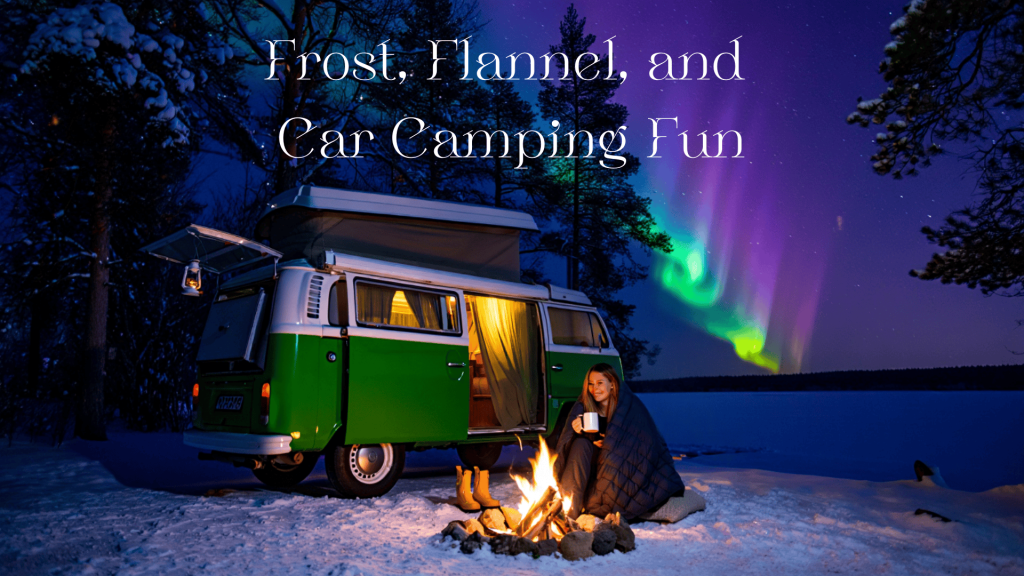Snow-covered mountain vistas, starlit skies, and not another soul in sight – winter car camping offers a magical outdoor experience most people miss.
When frosty temperatures send fair-weather campers home, savvy adventurers transform their vehicles into cozy havens and claim nature’s most spectacular season for themselves.
The crisp air, unmarked snow, and absolute tranquility create moments impossible to find during crowded summer months. With proper preparation, your car becomes more than transportation – it’s your basecamp, shelter, and home in the wilderness.
The secret to comfortable winter camping isn’t expensive gear or superhuman tolerance for cold; it’s understanding simple principles of heat management and moisture control.
Ready to watch the sunrise paint snow-capped peaks from the warmth of your sleeping bag? Let’s explore how to master the art of winter car camping.
How to Stay Warm While Winter Car Camping
Winter car camping offers a way to enjoy nature’s quiet beauty when most folks stay home. The crisp air, peaceful snow-covered landscapes, and star-filled skies make it worth braving the cold.
But staying warm isn’t just about comfort—it’s about safety.
Why Try Winter Car Camping?
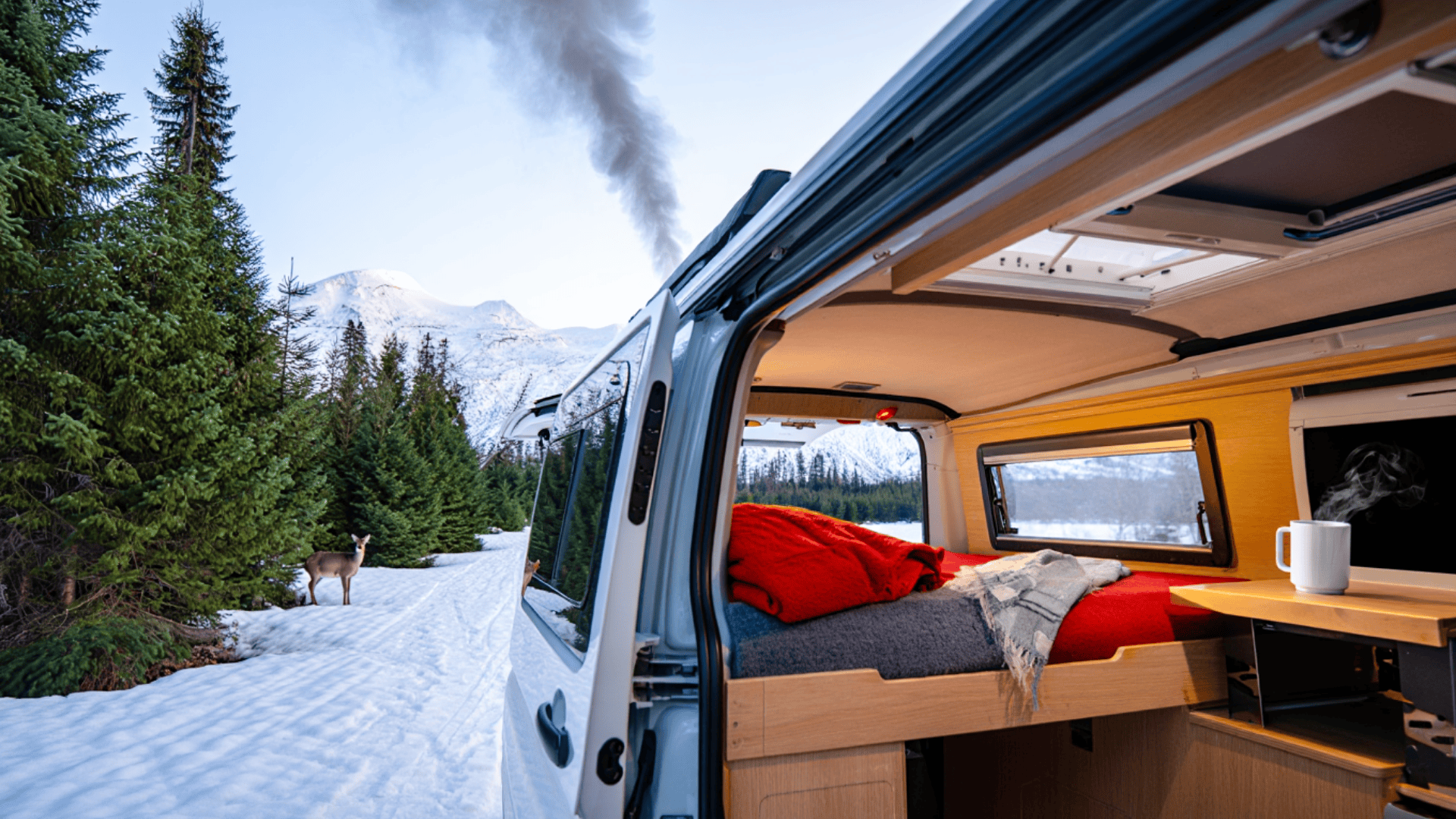
Many people miss out on the special joys of winter camping. Here are some reasons to give it a try:
- Fewer crowds at popular spots
- Wildlife viewing opportunities increase
- Photography with stunning winter backdrops
- Peace and quiet you won’t find in the warmer months
The solitude and beauty of winter landscapes can make the extra preparation worthwhile. Plus, you’ll have bragging rights among your camping friends.
What You’ll Need
Before heading out, you’ll want to prepare properly. Having the right gear makes all the difference between a miserable night and a cozy one.
| ITEM | PURPOSE |
|---|---|
| Quality Sleeping Bag | Traps Body Heat |
| Insulated Pad | Blocks Cold from Below |
| Window Covers | Prevents Heat Loss |
| Warm Clothing Layers | Adjustable Warmth |
| Hot Water Bottle | Quick Warming Solution |
Each piece of gear plays an important role in your overall comfort. The combination of these items creates layers of protection against the cold.
Let’s break down everything you need to know about staying toasty in your vehicle when the mercury drops. With these methods, you’ll be able to turn your car into a cozy winter haven—no matter what Mother Nature throws your way.
Essential Winter Car Camping Gear
Staying warm during winter car camping starts with having the right equipment. The items you bring can mean the difference between shivering all night and sleeping soundly.
Proper gear isn’t just about comfort—it’s about safety when temperatures drop.
1. Cold-Weather Sleeping Bags

Your sleeping bag is your most important defense against nighttime cold. Understanding temperature ratings helps you choose the right one for your trip.
Most sleeping bags come with two ratings: comfort and limit. The comfort rating tells you the temperature at which an average person can sleep without feeling cold, while the limit rating indicates the lowest temperature at which the bag provides enough warmth to prevent harm.
When selecting a sleeping bag, always choose one rated at least 10°F colder than the lowest temperature you expect to face. This gives you a safety margin for unexpected weather changes.
2. Insulated Sleeping Pads and Mattresses
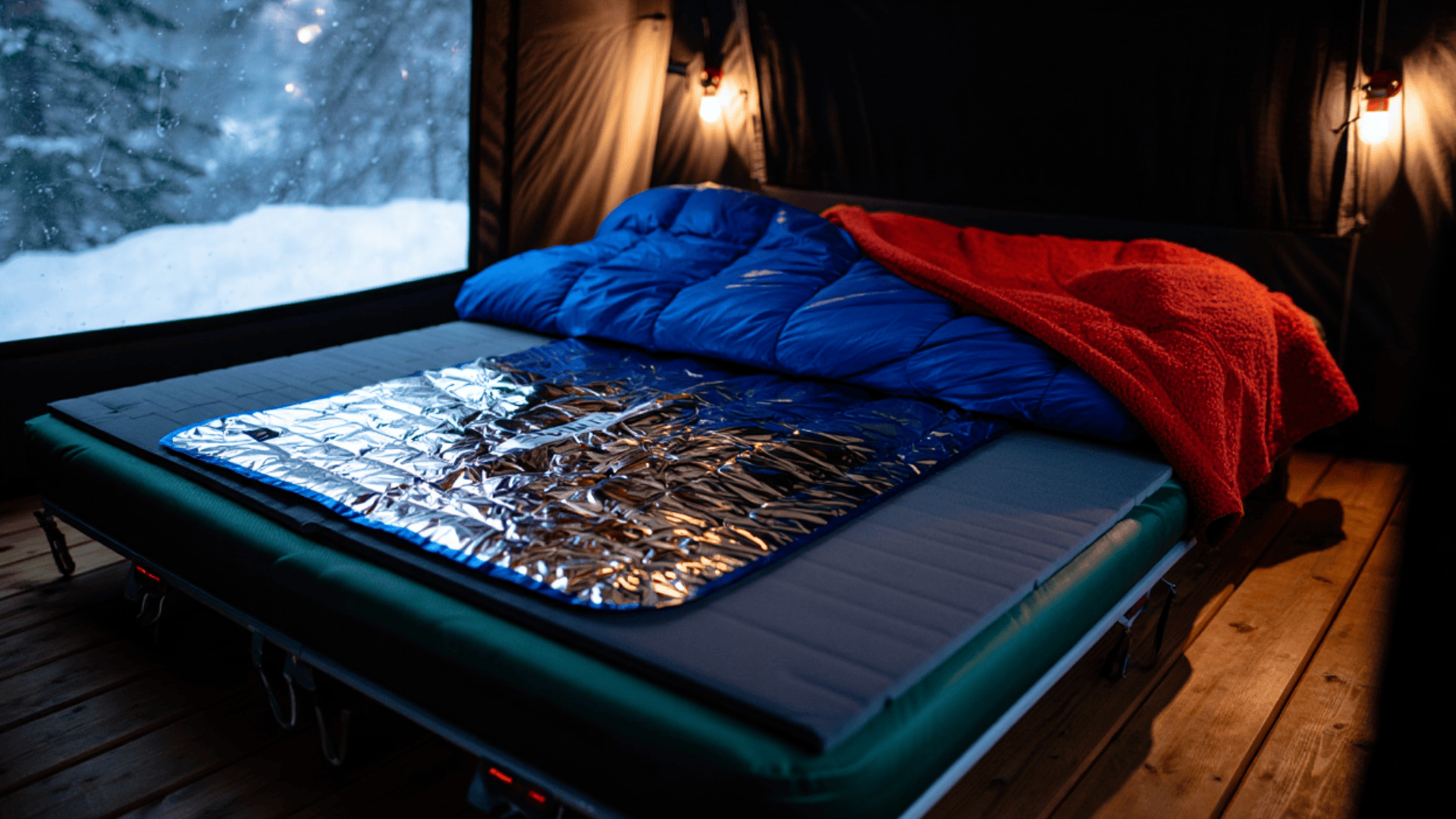
Many people focus only on their sleeping bag, but forget that cold comes from below too. The ground (or your car floor) pulls heat away from your body through a process called conduction.
R-value measures how well a sleeping pad resists heat flow—higher numbers mean better insulation. For winter camping, look for these features:
- R-value of 4+ – Minimum for freezing temperatures
- R-value of 5.5+ – Better for temperatures well below freezing
- Foam pads – Reliable insulation that can’t puncture
- Air pads with insulation – Comfortable but must be protected from punctures
Putting a space blanket with the shiny side up underneath your pad adds extra insulation with minimal weight and space.
3. Winter-Specific Clothing Strategies
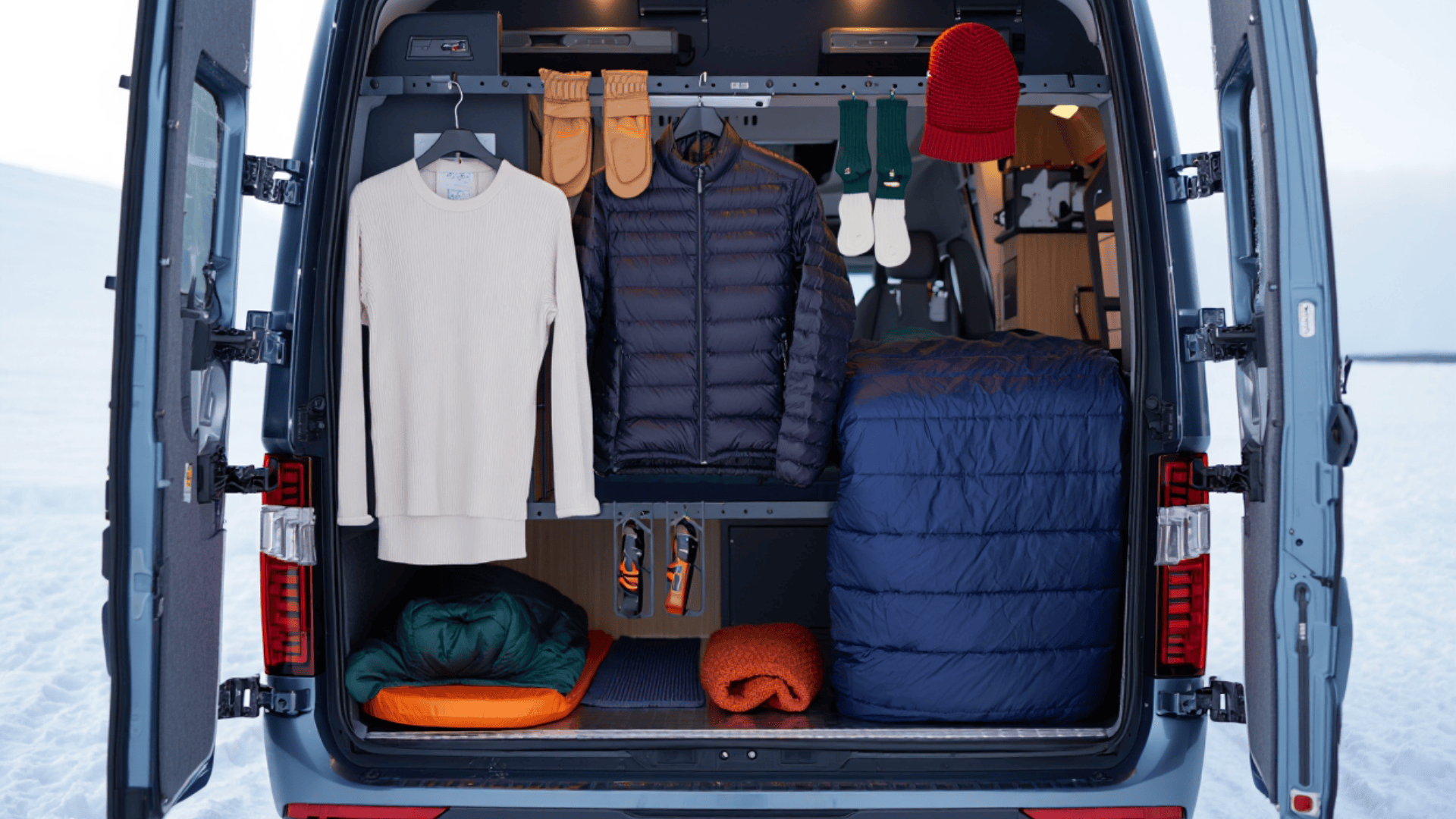
What you wear to sleep matters almost as much as your sleeping bag. Smart layering traps warm air close to your body.
The three-layer approach works best for winter conditions:
| LAYER | PURPOSE | EXAMPLES |
|---|---|---|
| Base Layer | Wicks Moisture Away | Merino Wool or Synthetic Long Underwear |
| Mid Layer | Insulates | Fleece Jacket, Down Vest, Wool Sweater |
| Outer Layer | Blocks Wind | Windproof Jacket or Shell |
Remember that tight clothing reduces circulation and can make you colder. Loose-fitting layers create air pockets that trap heat better.
Your sleeping clothes should be clean and dry—never sleep in the clothes you wore while active, as body moisture in them will make you cold overnight.
4. Portable Heaters: Safe Options
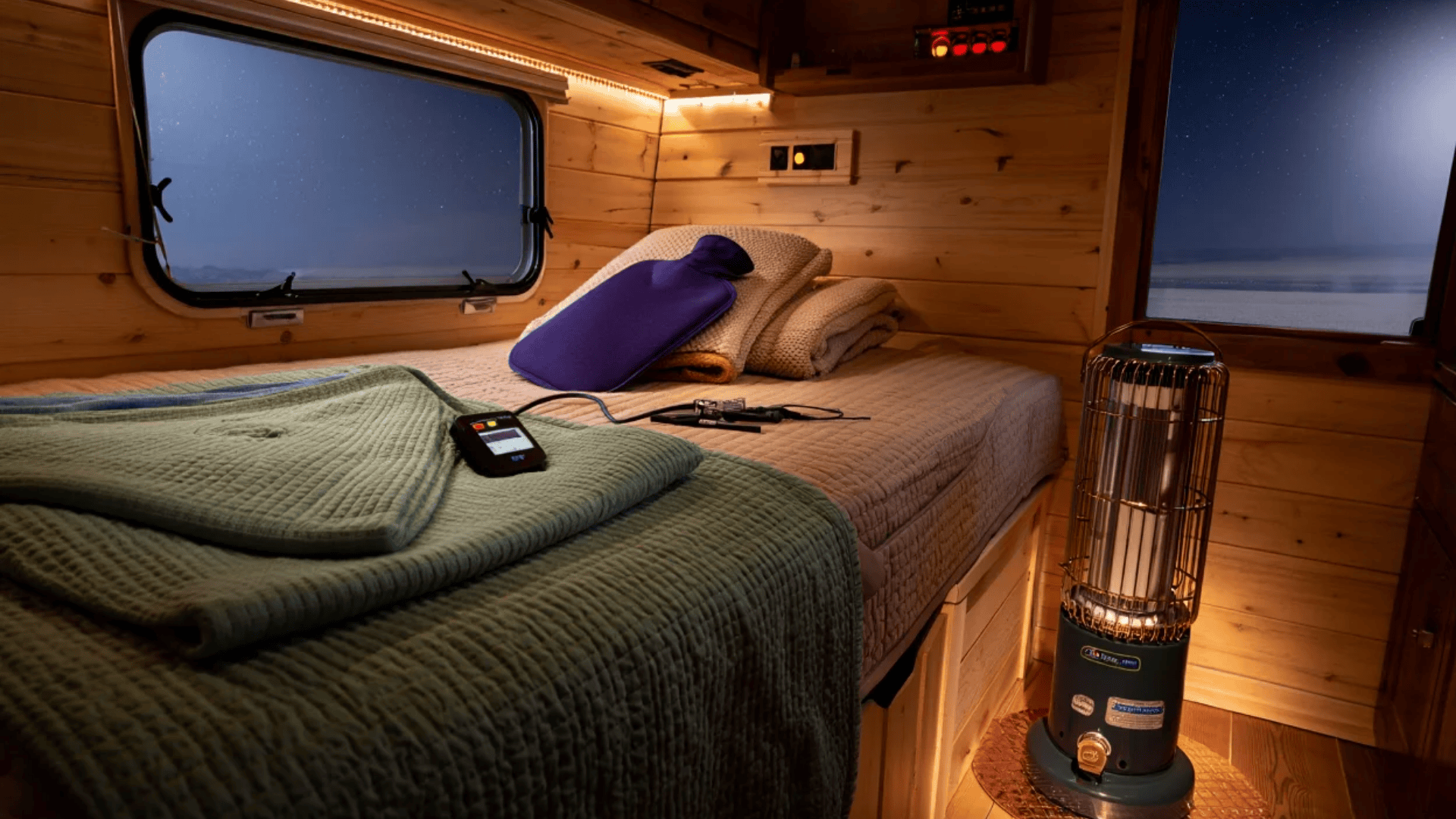
Portable heaters can make evening hours in your car more comfortable, but safety must be your top priority. Here are some safer heating options for car camping:
- 12V electric blankets – Run off your car’s power outlet
- Catalytic propane heaters – Low oxygen shut-off for safety
- Hot water bottles – No fire risk and stays warm for hours
If using any fuel-burning heater, keep a window cracked open and never sleep with the heater running. A carbon monoxide detector is a must-have safety device if you plan to use a propane heater.
Vehicle Preparation for Winter Camping
Getting your car ready for winter camping involves more than just packing the right gear. Your vehicle needs special attention to become a cozy overnight shelter when temperatures plummet.
Checking Your Vehicle Before Winter Trips

Cold weather can expose or worsen existing vehicle problems. A breakdown miles from help in freezing temperatures can quickly become dangerous.
Before heading out on any winter camping trip, take time to check these crucial items:
- Battery condition – Cold weather reduces battery capacity
- Antifreeze levels – Should be rated for temperatures lower than expected
- Tire pressure and tread – Winter conditions require good traction
- Emergency kit – Jumper cables, flares, and basic tools
- Fuel level – Keep the tank at least half-full to prevent the fuel line from freezing
It’s also smart to share your plans with someone who isn’t going on the trip. Let them know where you’ll be camping and when you expect to return.
Creating Sleeping Platforms
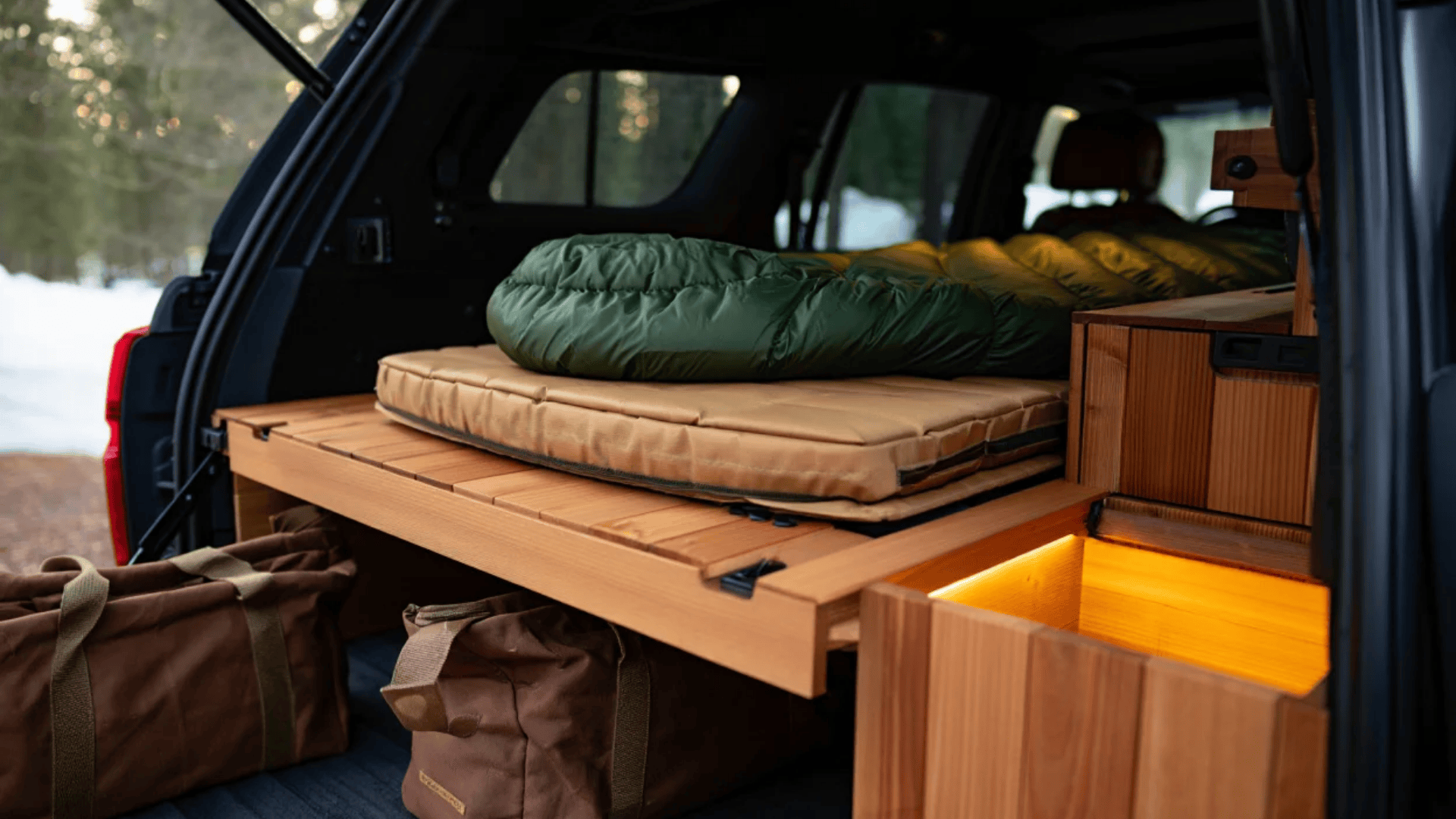
Most vehicles weren’t designed with sleeping in mind, but with some creativity, you can create a comfortable setup. The goal is to make a flat surface that keeps you off the cold floor.
Different vehicle types require different approaches:
| VEHICLE TYPE | PLATFORM IDEAS |
|---|---|
| SUV/Minivan | Fold down rear seats, add plywood to create an even surface |
| Sedan | Recline front seats fully, or build a platform extending from the trunk |
| Hatchback | Remove rear seats or fold flat, extend the platform from the trunk area |
Adding a thin piece of foam or carpet under your sleeping pad helps smooth out any bumps in your platform and adds extra insulation from the cold.
Safety Considerations for Cold Weather Camping
Your safety should always be the top priority when camping in cold weather. Winter conditions can change rapidly, and small mistakes can have serious consequences when temperatures drop below freezing.
Recognizing Signs of Hypothermia and Frostbite

Knowing how to spot trouble early can prevent dangerous situations from becoming life-threatening. Be alert to these warning signs in yourself and your camping partners:
Early signs of hypothermia include: Uncontrollable shivering is your body’s first alarm bell, followed by slurred speech and fuzzy thinking as your brain starts to cool. You might notice unusual clumsiness or stumbling, and a strange drowsiness that makes you want to rest—exactly when you should be getting warmer instead.
Watch for frostbite developing as:
- Skin that turns unusually white or grayish-yellow
- A pins-and-needles sensation followed by numbness
- Areas that feel hard or waxy to the touch
- Most common targets: nose, ears, fingers, toes, and cheeks
Check yourself regularly during activities and before sleep. Early treatment can prevent serious damage—don’t wait until it’s severe.
Creating Backup Plans

Smart winter campers never leave safety to chance. Before heading out, share your exact plans with someone reliable, create a contact schedule, map your nearest help options, know your escape routes, and prepare for worst-case scenarios.
A written emergency plan kept somewhere accessible can save precious minutes during a crisis.
Safely Using Heat Sources
The comfort of warmth can sometimes lead to dangerous choices. Carbon monoxide claims lives every winter.
| HEAT SOURCE | SAFETY MEASURES |
|---|---|
| Propane heaters | Use only those rated for indoor use, ensure proper ventilation, and use a CO detector |
| Car engine | Never sleep with the engine running, even “just to warm up” |
| Candle lanterns | Keep away from flammable materials, never leave them unattended |
| Chemical warmers | Follow package directions, don’t apply directly to skin |
Remember: You can’t smell, see, or taste carbon monoxide. If people have headaches, dizziness, or nausea, get them to fresh air immediately.
Food and Water Management in Freezing Temperatures
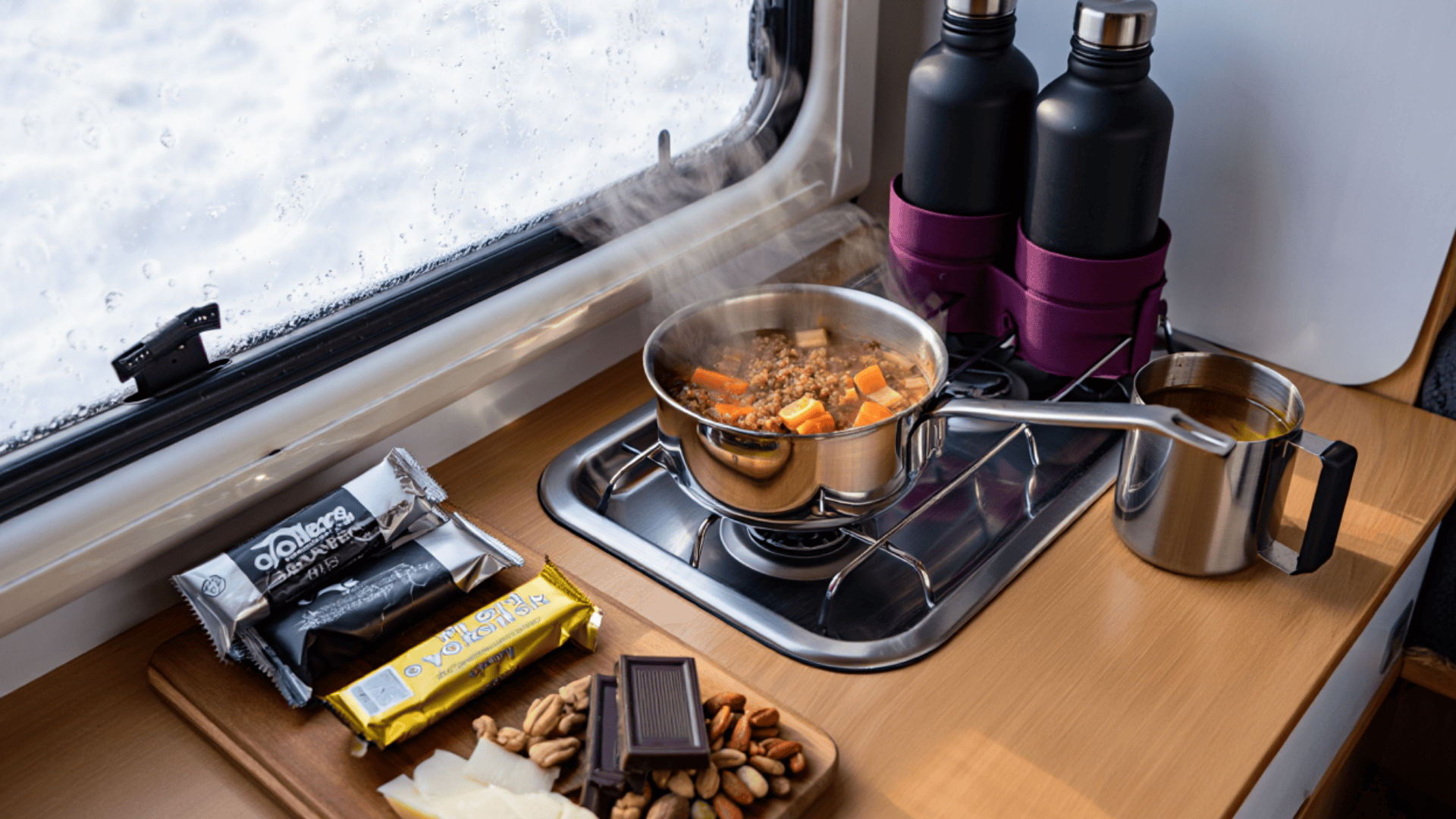
Cold-weather camping increases your body’s need for fuel and hydration while making both harder to maintain.
For Drinking Water that Stays Liquid: Store bottles upside down (ice forms at the top first), sleep with your water supply, use wide-mouth containers for easier access if partial freezing occurs, and know how to safely melt snow as a backup.
Winter-Friendly Food Strategies: Your body burns significantly more calories in cold weather—up to 50% more when active in below-freezing temperatures. Pack dense, high-calorie options that won’t freeze solid: nut butters, certain cheeses, energy bars, and oils. Hot meals do double duty, warming your body while providing nutrition.
Finding Winter Car Camping Destinations
Choosing the right location for winter car camping makes all the difference between a wonderful experience and a miserable one. Not all summer camping spots remain accessible or enjoyable in winter months.
Winter-Accessible Camping Locations
The perfect winter camping spot balances accessibility with solitude. Look for these key features:
| WHAT TO SEEK | WHY IT MATTERS |
|---|---|
| Year-Round Maintained Roads | Ensures you can both reach and leave your campsite safely |
| Lower Elevations | Generally means less snow accumulation and milder temperatures |
| Southern Exposure | Maximum sunlight hours for warmth and solar charging |
| Natural Windbreaks | Trees or terrain features that buffer your site from prevailing winds |
| At Least Spotty Cell Coverage | Provides emergency communication options if needed |
State forests, BLM lands, and national forests often permit dispersed camping year-round with fewer restrictions than during high season.
Researching Road Conditions and Closures
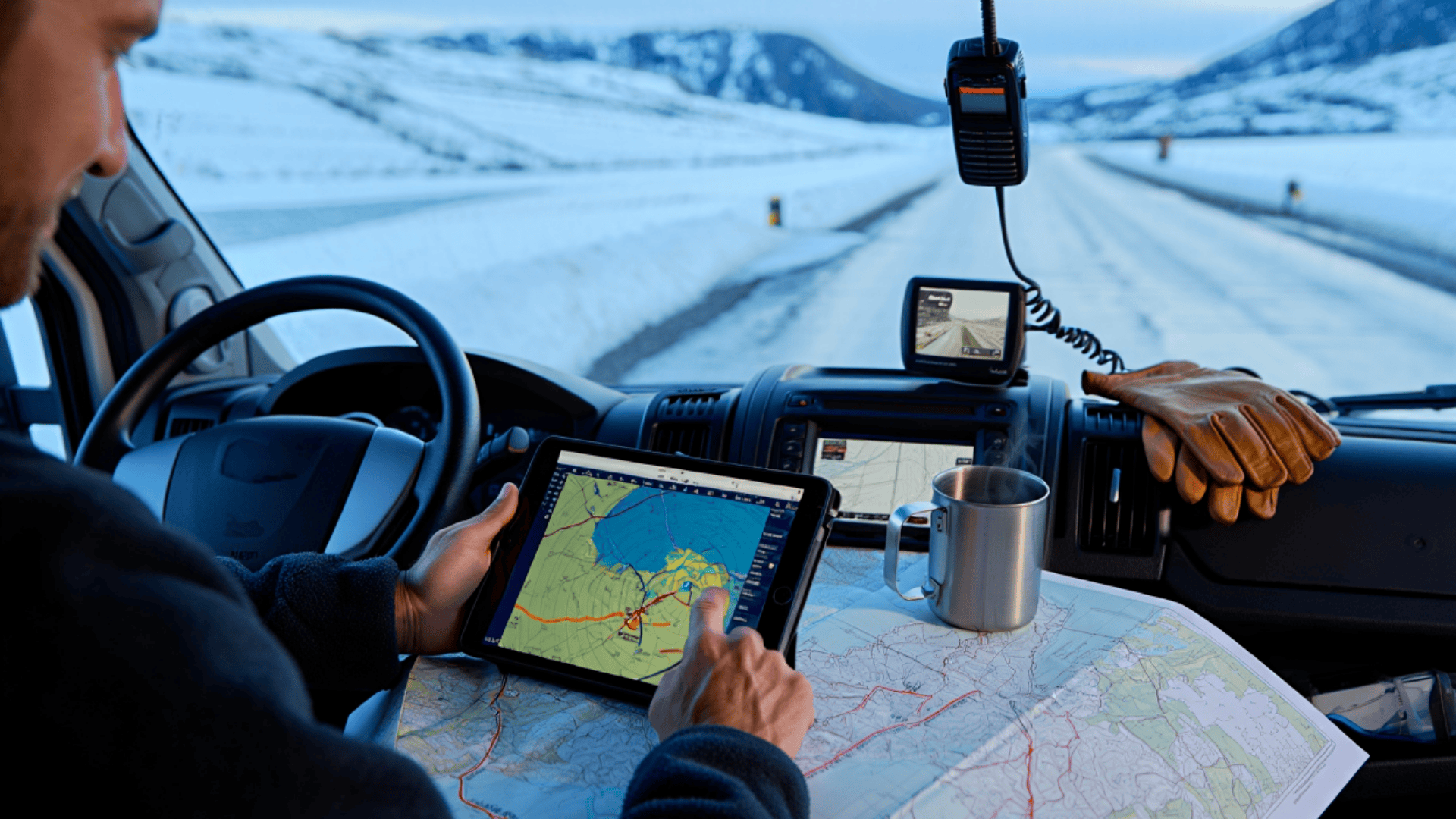
Winter road status can change hourly. What was open yesterday might be closed today.
Where to get reliable information:
- State transportation department websites and apps
- Highway patrol social media accounts with real-time updates
- National Weather Service winter advisories
- Local roadside webcams for visual confirmation
- 511 phone services are available in most states
Download offline maps before your trip, marking alternative routes and potential shelter locations. Cell service often disappears precisely when you need information most.
Tips from Experienced Winter Car Campers
Learning from those who’ve spent countless nights winter camping can save you from making common mistakes. These practical insights come from people who’ve refined their systems through trial and error.
Common Mistakes to Avoid
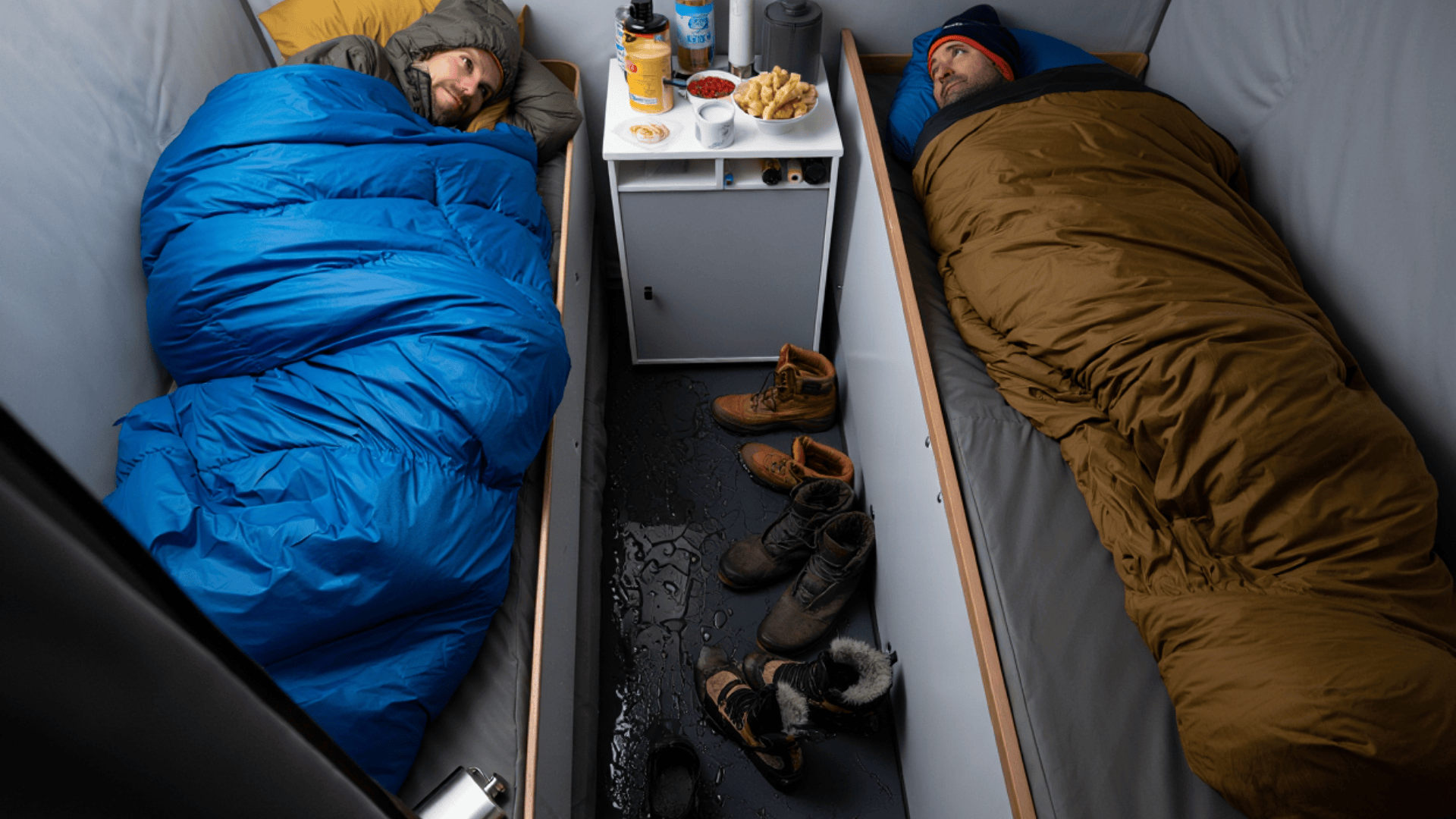
Knowing what not to do can be just as valuable as knowing what to do. These five mistakes are frequently made by winter camping newcomers:
-
The layer trap: Wearing too many layers to sleep makes you sweat, and wet clothes make you colder. Instead, sleep in dry, loose layers with your insulation on top, not compressed underneath you.
-
The face plant: Breathing into your sleeping bag creates dampness. Keep your face outside your bag, using a balaclava or hat to keep your head warm instead.
-
The cold start: Beginning with cold gear means your body wastes energy warming it. Pre-warm critical items before use.
-
The alcohol myth: That warm feeling from spirits is misleading—alcohol actually reduces core temperature and impairs judgment. Save celebratory drinks for when you’re safely home.
-
The calorie deficit: Skipping meals or hydration in cold weather is a recipe for trouble. Your body needs fuel and water to generate heat.
With careful preparation, proper gear, and knowledge from experienced winter campers, you can turn your vehicle into a cozy base camp for winter adventures.
The extra effort opens up a season of camping that most people never experience—a peaceful world of snow-covered landscapes, brilliant stars, and the deep satisfaction of thriving in challenging conditions.
Final Thoughts
Winter car camping opens doors to outdoor experiences most never witness – pristine landscapes, wildlife encounters, and peaceful solitude impossible during busy seasons.
The memories you’ll create – sipping hot coffee as morning light illuminates snow-dusted forests, spotting animal tracks, telling nighttime stories, and feeling that unique sense of accomplishment that comes from thriving where others won’t venture – these become treasures no luxury hotel can provide.
The extra preparation pays dividends in unparalleled natural beauty and bragging rights among your adventure-seeking friends. You’ll discover winter isn’t something to endure but a season to embrace.
With your vehicle transformed into a mobile winter cabin, countless destinations await. Pack your warmest sleeping bag, prepare your vehicle, and claim your slice of winter wilderness. The road less traveled is calling.
Don’t miss out—return for more vacation planning tips and off-the-beaten-path guides.

